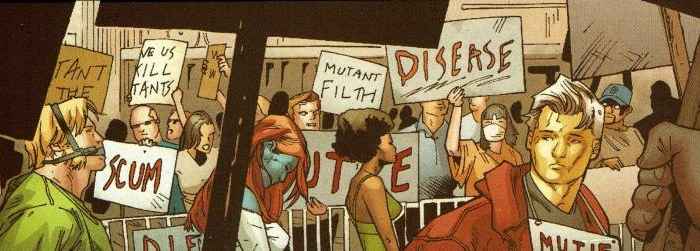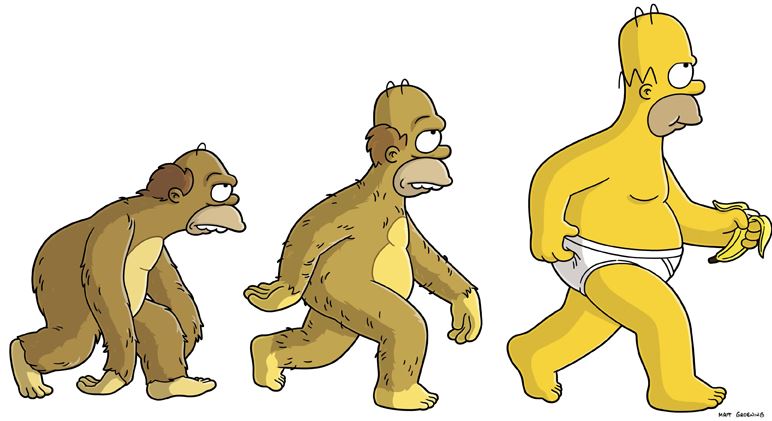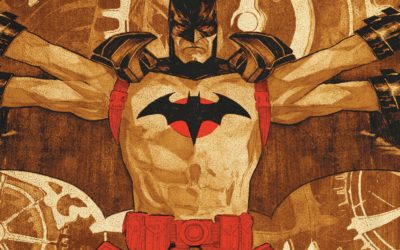Herd immunity is still in the news, and occasionally, it’s being conflated with something else seen in large groups: natural selection.
They’re not the same thing.
One’s for now, one’s for later.
Herd Immunity: Something for Now
As I explained a little while back, herd immunity is what happens when most of a population is immune to an infection, via immunity following infection and recovery, or immunity granted from vaccination. Measles, mumps, and polio – modern society has herd immunity to those three largely because of vaccines. People do occasionally get those diseases, such as seen with vaccinated individuals becoming infected with the disease (which was due to the version of the vaccine they received as children in the 1960s), but by and large, the infections do not spread through communities because of the immunity. The virus cannot find enough hosts to infect and dies out within the community. There are still individuals who can be infected – for example, chemotherapy patients, or individuals with a weakened immune system, but those who are immune to the disease within the kingdom protect the non-immune.
Herd immunity can be lost, however, when the number of individuals without immunity increases, which is most commonly seen today by children not being vaccinated. Non-immune children can become infected, and then pass the disease to other non-immune individuals within the community. The Measles outbreak in 2015 at Disneyland is an example of that kind of outbreak. Herd immunity can also be diminished as viruses mutate over time, which is why we get updated vaccines for the flu every year – they’re targeted at what virologists and epidemiologists think will be the dominant flu strains of that season.
The most common types of vaccines work by injecting otherwise healthy individuals with whole copies of or parts of the disease-causing virus. In the whole virus version – “live virus” – a limited concentration or hobbled version of the whole virus is injected, while in the “dead virus” version, pieces of the viral protein coat or other parts are in the vaccine.
While that’s an extremely light touch on vaccines, the body’s effect is basically the same for both – the immune system recognizes the weakened virus or viral pieces as “other,” and attacks. As part of the attack, specialized white blood cells, B lymphocytes enter the fray, exposing themselves to the viral particles, and binding to specific parts. Once bound, the virus or parts – called the antigen trigger the B cell to divide, specializing into plasma or B memory cells. The plasma cells create and pump out antibodies, immunoglobulin, a class of proteins that can hunt and kill foreign invaders outside of cells through a variety of means.
Also as a result of the period of slight infection with the virus or viral parts, the body “remembers” what the invader looked, smelled, and tasted like via the B memory cells as well as memory T cells. Basically, as a result of the vaccine (or infection) your body has antibodies to the virus circulating throughout (these are what are tested for in the COVID antibody test -evidence of a SARS-CoV-2 infection), as well as cells that are wandering through the circulatory and lymph systems with a collection of mugshots, ready to go after the next invader they recognize. Over a period of time, your body can “forget” what the invader looked like, which means it’s time for a booster or maybe a surprise infection when you thought you were up-to-date on your immunizations.
Again – this is a very light touch on the immune response and antibody production. For a more in-depth look, check out The British Society for Immunology, Pacific Immunology, or the Antibody Wikipedia page for a general, jumping-off point. And check here for the Johns Hopkins Bloomberg School for Public Health page on herd immunity.
If SARS-CoV-2 behaves like other coronaviruses we’ve run into, then it’s most likely (although not proven yet – though the most recent signs are very promising) that both individuals who’ve been infected as well as recipients of an upcoming vaccine will be immune to reinfection for a period of time, but will need subsequent vaccinations to keep their antibodies “tuned” to circulating strains of the virus, which will change over time.
To reach herd immunity with SARS-CoV-2, a measure that is in part, based on its Ro value (click here for more on that), we would need between 65-70% of the population to be immune, either by infection and recovery, or a to-be-developed vaccine. Without herd immunity, we’ll be locked into a cycle of surges and fall-offs as the uninfected in regions and communities become infected and either recover or die.
And again, we have no idea how many people in the United States have been infected (and we’re nowhere near on knowing, conclusively, how many people have died from COVID-19). Antibody tests will help, and along with them, knowing for sure that infection and recovery grants immunity to the current family of SARS-CoV-2 strains that are part of the pandemic.
Okay – deeper dip back into herd immunity than you were thinking, but it’s always good to get the basics back out there. Herd immunity happens in a community when a large portion of the individuals are, or become, immune to the infection. As new members (babies) come into the community, the immunity must be given to them, either by infection or vaccine. And of course, immunity among community members who were at one-time immune can diminish as well. Without maintenance, herd immunity can be lost.
Now – onto the other thing…
Natural Selection – Something for Later
One of the key differences between herd immunity and natural selection is that natural selection involves changes to organisms that are passed to offspring. That right there puts it in a wholly different camp than herd immunity. Immunity is a one-and-done thing for the organism that’s not, that can’t be passed on to offspring.
I get it – it’s getting a little messy because (unfortunately) some groups are pointing out that COVID-19 will kill the weak among us, and that’s a natural thing, which kind of sounds like something that might go with evolution and natural selection – these organisms weren’t fit for the environment, right? This is just the survival of the fittest.
Well, yeah – but what we’re seeing with that is more similar to a predator-prey relationship. Kinda. Not a perfect analogy, but let’s move on from talking about “thinning the herd” when it comes to humans letting other humans that are considered “weak” or “inferior” die. Historically, nothing good has ever come from discussions about that.
Back to natural selection. All organisms of the same species have some genetic variety from one to another. That’s due to random changes in the genetic material of the organism, called mutations, and the changes happen for any number of factors. If those changes – by chance – make the animal more “fit” in their environment, that means they are able to have more offspring than organisms without the specific gene. The overall change that’s been made – we call that an adaptation, in that the organism has adapted to its environment. Over time, the more “fit” organisms that have better adapted to their environment are “selected for” by the environment, and the less fit who have not adapted as well, are “selected against,” and gradually disappear.
Natural selection is a mechanism of evolution which is just change of an organism over time. Given enough time and changes, species can morph into completely different-looking forms that are more fit for their particular environment, or, with enough changes over time, species can change into wholly different species.
A couple of more things about the changes – they’re completely random. They may make an organism more fit for the environment, less fit, or have no effect at all on the organism’s fitness. Species tend to keep the good – the changes that make them more fit for their environment, while diminishing the bad – although they can still be carried as recessive genes. Also – as the environment changes over time, mutation, genetic drift, and natural selection all continue right along with it, as organisms that were once kings of their particular castles become less fit and can ultimately be replaced by versions that are more fit. In the worst-case scenarios (you can put human’s effect on the environment or climate change in here if you’d like), the environment changes too quickly for natural selection to keep up, and the organisms are selected against by the new environmental conditions and can go extinct.
So – mutations, genetic drift, and adaptations as a result of natural selection…not good or bad, necessarily – just things that happen. Slowly. Drives evolution. Over time. More fit survive, less fit…don’t.
Want a great, easy to understand explanation of natural selection? Try out the Amoeba Sisters:
“My…Mutant…Immunity!”
Oh, I know – it sounds like natural selection would be a perfect fit for something infectious like a virus, right? Humans could just evolve out of our vulnerability to SARS-CoV-2, yeah?
But no.
The best evidence to date suggests that SARS-CoV-2 attacks cells via ACE2 on the surface of cells. So – going with this point of attack, the simple answer would be that a mutation of ACE2 would do the job. Scramble a few letters of the genetic code so SARS-CoV-2 can’t attach at ACE2, and all’s good in the evolutionary hood, right?
Some things with that:
- The changes to an organism’s genetic code usually happen over time. Long periods of time. Loooong periods of time. They’re random changes. Think of the good change – the one change you want to happen as a needle, and the other changes are the strands of straw in a haystack. A change to alter the ACE2 site isn’t impossible, but it’s most likely not going to happen in a baby born tomorrow. It’s going to take a while – and each individual is another dice shake, another spin of the dial, rather than a stepwise progression towards a specific goal.
- Mixed in with the changes that happen randomly, most of them are bad, some of them are neutral, and only a very few are something we would consider good.
- And to kick this dead horse of a point – the changes from natural selection don’t show up in the individuals who may need or benefit from them right now. Any change is going to be at least a generation away (and that’s astronomically miraculous, has probably never happened in the history of life on earth, best case scenario) and shown in the offspring of the organisms living under the conditions that are applying pressure to “change.”
- You’d want more than one change to that ACE2, probably. While it’s possible that a single gene change could deny SARS-CoV-2’s landing rights on the cell, it’s unlikely. To make the ACE2 non-land-able for the virus’ spike (or just “S”) protein, more than one change would be required. Read that as more than one good change. Yes, a bulk change could happen, in either case, either more than one beneficial changes in the same place affecting an undesirable outcome or a big change – it’s going to take, essentially, forever from our human perspective.
- While we’ve been focusing on evolving the ACE2 away from viral usefulness, we’ve skipped over what it does in the body anyway. ACE2 – angiotensin II converting enzyme – plays a vital role in controlling blood pressure in the body, as well as other functions, both known and yet to be discovered. A change that affects ACE2 has a high likelihood of being fatal for the organism either very early on, or after being born.
- Big picture-wise, what’s the benefit? Let’s say that, busting all the probabilities and chances against – an individual is born with a mutant gene that affects ACE2 in such a way that SARS-CoV-2 cannot attach with an S protein, and the person is thus, effectively immune. Oh, and somehow, this mutation does not adversely affect any of the other functions in which ACE2 plays a role. That’s a terrifically small possibility, but hey – we’re here, right? Okay. So what? For the vast majority of infected individuals, SARS-CoV-2 is not a death sentence, and many that do die from related factors have already passed on their genes, that is, had children. What’s the reproductive benefit of being a mutant that is immune to the virus? What makes the mutants more fit than a human who’s been infected, and then recovers? Yeah…there isn’t one. A genetic change that allows for immunity wouldn’t become the most common version of the ACE2 gene package because there’s no reason for the environment to select for it. Recovered people and mutants alike have babies. There would be no benefit to being a COVID-19-resistant mutant.

COVID-19 resistant mutants would be useless, and probably, just be asked to go home. More politely than this, though. (c)Marvel Comics
A caveat to all of this is that, while unlikely, there may be a genetic link to why some people get sick with COVID-19 and others don’t exhibit any symptoms (their ability to infect othrs is most likely a different story, though). As recently reported, 23andMe is looking into the genetic profiles of COVID-19 patients to see if there is some kind of genetic clue to why the disease can kill some, seemingly healthy people, but not others.
But so far, the results haven’t been great. Speaking to MIT Technology Review, Andrea Ganna, coordinator of the COVID-19 Host Genetic Initiative said that so far, the genetic information from 900 COVID-19 cases hasn’t shown any significant genetic markers that would indicate a genetic component.
“If we don’t find a really big signal in the next month or so, then I think genetics is not going to be of huge value in the management of the disease, like determining who you treat. What is still very, very important is the biology, and understanding the biology through the genetics, and then with vaccination,” Ganna said.
To consider in all of this is the idea is the fact that there are other diseases where genetics do play a role, such as those with sickle-cell genes have a resistance to malaria, and som e other gene variants can give individuals a level of protection from norovirus (the infamous intestinal virus that all-too-frequently shows up on cruise ships), and HIV.
The thing with those genetic connections is similar to what we’d see with a possible link with SARS-CoV-2 – some genetic condition would result in how some individuals reacted to infection, now. As a species, we would not be evolving towards an immunity.
Our Co-Evolving, Mutant Buddy…
One more thing to consider on the natural selection side of things, and possibly evolving COVID-19 immunity is that SARS-CoV-2 is evolving too.
You affirm this type of evolution every year, when you get your seasonal flu shot. Multiple strains (the same virus with enough tweaks to its genetic material to make it distinct from others) of the flu vary in their prevalence from flu season to flu season, with new strains developing all the time thanks to small changes over time.
Viruses are particularly vulnerable to having their genetic sequences changes thanks to things we take for granted in our cells, like a distinct nucleus and nuclear membrane which offer some protection to our DNA. WIthout such protection, viral genetic material (most often RNA) gets punched, kicked and bullied by a variety of players during its formation, and as a result, when an infected cell bursts (lyses) releasing the new copies of the virus, there are many, many variations in their genetic material just from their creation in that one cell. Small changes over time.
Viruses (and bacteria) evolve faster than we do. It’s why we see antibiotic resistance in bacteria, and the rise of “superbugs” that remain out of the reach of some modern medicines. After living under the environmental pressure from antibiotics, for example, random mutations over time led to some organisms being able to survive and thrive in the presence of antibiotics.
Scientists are looking at SARS-CoV-2 to see how rapidly it is mutating, and while some stories have taken a sensationalist angle, most researchers are in agreement that the virus is mutating slowly, and that there are two main strains of SARS-CoV-2, the D version which appears to have spread from China, and the G version, which seems to have spread predominantly from Europe.
We’ll let our pal, Hank Green give the full scoop.
The thing with the viral mutations is that they follow along with the overall rules of evolution: the vast majority of changes will have no effect on the virus’ functions – that is, its ability to infect or sicken humans. SARS-CoV-2 is mutating and changing at a relatively slow rate for a virus, and that’s great news for potential vaccines – the target the vaccine is aimed at should, in theory, remain consistent for some time. But – remember, viruses can change with each infected cell. They reproduce (and create generations with slightly changed genetic material) at a rate which is orders of magnitude faster than humans, but still – evolution into something completely and functionally different, either a much weaker version or a much more virulent version is a slow, slow process. It can happen – it’s not likely in the immediate future – but it can happen.
Where Are We?
Same place we started at, really. Which is frustrating. Herd immunity, about which I’ve talked about at length isn’t a quick thing, one without cost, one that can be reasonably supported without vaccination support, or one that our history indicates that we’ll reach for SARS-CoV-2, given the latest research into the characteristics of the virus.
“Natural selection” used in the sense that future generations will evolve immunity or just we’ll somehow grow to be immune to SARS-CoV-2 isn’t on the table here for any number of reasons explained earlier. Real natural selection takes a long, long, long time, and while the evolutionary history of life does suggest occasional weird things happening, putting our chips on that for coming generations isn’t a winning bet.
“Survival of the fittest” – no. Just, no. We all understand what the folks who are claiming that are saying, yeah? So…no.
What does that leave? We’ll be dealing with SARS-CoV-2 for a long while, most likely. As more and more of the US (and other countries open up), we have, as a society chosen to move away from containing the virus and working to eradicate it via social distancing, isolation, and hygiene to mitigating its effects on the population as a whole and making sure that the largest number of people survive. That’s not a political statement. That’s just where we are and the road we now find ourselves on.
Our country, our world is a petri dish now, and we’re all part of the experiment.







